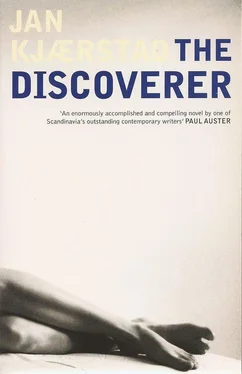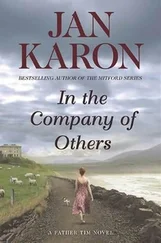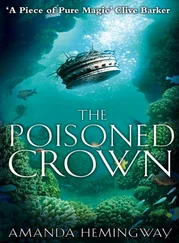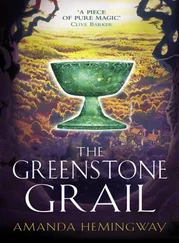Jan Kjaerstad - The Discoverer
Здесь есть возможность читать онлайн «Jan Kjaerstad - The Discoverer» весь текст электронной книги совершенно бесплатно (целиком полную версию без сокращений). В некоторых случаях можно слушать аудио, скачать через торрент в формате fb2 и присутствует краткое содержание. Год выпуска: 2009, Издательство: Arcadia Books, Жанр: Современная проза, на английском языке. Описание произведения, (предисловие) а так же отзывы посетителей доступны на портале библиотеки ЛибКат.
- Название:The Discoverer
- Автор:
- Издательство:Arcadia Books
- Жанр:
- Год:2009
- ISBN:нет данных
- Рейтинг книги:5 / 5. Голосов: 1
-
Избранное:Добавить в избранное
- Отзывы:
-
Ваша оценка:
- 100
- 1
- 2
- 3
- 4
- 5
The Discoverer: краткое содержание, описание и аннотация
Предлагаем к чтению аннотацию, описание, краткое содержание или предисловие (зависит от того, что написал сам автор книги «The Discoverer»). Если вы не нашли необходимую информацию о книге — напишите в комментариях, мы постараемся отыскать её.
The Discoverer — читать онлайн бесплатно полную книгу (весь текст) целиком
Ниже представлен текст книги, разбитый по страницам. Система сохранения места последней прочитанной страницы, позволяет с удобством читать онлайн бесплатно книгу «The Discoverer», без необходимости каждый раз заново искать на чём Вы остановились. Поставьте закладку, и сможете в любой момент перейти на страницу, на которой закончили чтение.
Интервал:
Закладка:
In other words, by the time the Germans left the country, Jørgine’s second husband had made himself a nice packet. Which no one knew anything about. And better still: he had been shrewd and foresightful enough to stash away his money in an obscure network of bank accounts. It had, in other words, been nicely laundered.
Right from the day when he effected his carefully calculated about-turn, at a time when everyone could see that the Germans’ luck was also turning, he was convinced that he would get away with it. He had not, however, reckoned with his wife-to-be; how was he to know that behind a smiling, friendly and indeed apparently loving mask, Jørgine Wergeland viewed him quite simply as another Hitler, a man whom she had resolved to bring down. If he had not suspected anything before, then he should have done when she turned to him as they walked out of the registrar’s office, looked him straight in his hammerhead face and uttered her first words as a newly-wed: ‘I have nothing to offer but blood, toil, tears and sweat.’
Jørgine Wergeland declared war on her husband, she commenced a campaign of resistance of which no one was ever aware, conducted as it was within the four walls of their home. And she resorted to tactics which were much more ruthless than the clattering of pots and frying pans.
I do not know whether Jonas Wergeland associated Høyanger with demonstrations, with women and saucepans, but I noticed the rapt expression on his face one day when we were strolling along the steamship wharf and he spotted the old Høyang emblem on the door of the metalworks. He was clearly moved by the sight of that name, which had been stamped into the aluminium of so many of his boyhood’s saucepans, including the ones on which he had done some cacophonic drumming of his own.
Whitsun was just around the corner. We were tied up at a pontoon dock out by the breakwater, under the southern face of Gråberget, with a great view of the town and Hålandsnipa forming a wall behind it, and of Øyrelva, its foaming white stream snaking down the mountainside on the other side of the fjord. The chimneys at the metalworks no longer spewed out black smoke as they did in the old photographs taken by Olav Knutzen; fluoride-laced smoke that had, in the past, done so much visible damage to the environment. No one now could call the works at Høyanger a ‘black cathedral’ or a ‘dark, satanic mill’. And yet, as we sailed up the fjord I had the strong impression of a meeting between a new age and an old. At first glance the sight of the vast metalworks, the production halls and the towering silos in which the raw material, oxide, was stored, was impressive. But when I thought about it I realised that the Voyager , our modest little craft, housed an industry every bit as great. It had struck me before that our boat, with its enormous capacity for storing information and its possibilities for wireless communication with the whole world, represented something bigger, mightier, than all the Hydro Aluminium buildings in this mountain-encircled basin. In terms of potential the Voyager was, in fact, an aircraft carrier; theoretically we could sit here, out on the fjord, and generate assets as great as Hydro earned by selling the aluminium made at Høyanger. Sailing there on the fjord, we provided the perfect illustration of the new Norway and the old. A small mobile object approaching something massive and steadfast. And vulnerable. No one, least of all the townsfolk, could tell when the owners of Høyanger’s cornerstone industry might see fit to shut down the plant, possibly set up production elsewhere.
Sogn. Again and again I was struck by how extraordinary, how unique , this area was. In many ways it was Norway in a nutshell. Until well into the nineties there was not a single state wine monopoly outlet in the Sogn and Fjordane region. And in the whole district there was but one set of traffic lights. Sogn was like a little Switzerland smack in the middle of Norway. Often, when we sailed round a point and one of those little towns hove into view, tucked away at the head of an inlet or the arm of a fjord and ringed by high mountains, I would find myself thinking that there was something unreal about it, that it was a bit like the valley of Tralla La in Carl Barks’s story about Uncle Scrooge; a place where everyone was happy. And people in Sogn were happy. A host of surveys confirmed, time and again, that the inhabitants of this region were the most content in the whole country. In every set of statistics they came out on top where what mattered was to be top, and came bottom where that was best. They lived longest and were least sick, if you like.
I had wondered whether this might have something to do with the contrasts found around Sognefjord. Did they generate a tension, a salubrious force field which in turn made the people expand? Here in Høyanger, with all its clear reminders of aluminium, that attractive light metal, my thoughts often turned — as if running down an opposite track — to all of the fruit-growing which we had also seen in Sogn. I will never forget the view as we sailed past Leikanger. The whole place, the slopes running up to the heights, shimmered with the pale-pink blossom on tens of thousands of apple trees, shot here and there with sunlight glinting off the sprinkler jets. The climate at Leikanger was so favourable that you could plant an apricot tree against a south-facing wall or even grow grapes. We anchored close enough to shore to be able to enjoy the sight of the gigantic walnut tree in the vicarage garden, standing between the main house and the water. Did the key to Sognefjord perhaps lie hidden here? In the tension between plants and minerals, fruit and aluminium? Amanlis, Summer Red and d’Oullins on the one side, cables, ceiling panels and railway wagons on the other. I would not argue with anyone who dared to say that the healthiness and contentment of the local inhabitants stemmed from a kind of visual alchemy — the blossom-covered branches of an apple tree against a backdrop of silvery aluminium cylinder blocks.
In Høyanger Jonas could easily have passed for a local, by which I mean that he seemed even more content than usual. Possibly because he came upon so many unexpected links with his own life. As when, for example, someone told him about the slug factory which had closed down just before the turn of the millennium and he realised that the material for the tubes containing his favourite sandwich spreads had been made there. At another factory, Fundo’s, they produced the wheel rims for the car which he himself drove. Høyanger helped one to understand the world of today. In a small town at the head of a narrow fjord, walled in by steep mountainsides, they manufactured a car part for a factory in another country which also received parts from a dozen other countries. You lived in Høyanger, but were part of a global network.
But there was another reason for Jonas Wergeland’s happiness, and that reason was Kamala. I have nothing against that — I least of all. It was the best thing about the whole trip: to see those two, Kamala Varma and Jonas Wergeland, together; to observe how devoted they were to one another. ‘How’s my secretary getting on?’ Kamala might say, wrapping her arms around him. And he would not answer, merely allow himself to be hugged. Even when he was sitting alone on deck, possibly writing something in his big notebook or simply staring up at the rigging, her effect on him was clear to see. His name appeared in print at the very beginning of a love story. Whenever I saw him I could not help thinking: there’s a man who is loved. Who simply laps up love. So he can learn to love. Become a lover. That may sound easy, but for Jonas Wergeland it was anything but. It had taken him a lifetime to reach this stage.
Читать дальшеИнтервал:
Закладка:
Похожие книги на «The Discoverer»
Представляем Вашему вниманию похожие книги на «The Discoverer» списком для выбора. Мы отобрали схожую по названию и смыслу литературу в надежде предоставить читателям больше вариантов отыскать новые, интересные, ещё непрочитанные произведения.
Обсуждение, отзывы о книге «The Discoverer» и просто собственные мнения читателей. Оставьте ваши комментарии, напишите, что Вы думаете о произведении, его смысле или главных героях. Укажите что конкретно понравилось, а что нет, и почему Вы так считаете.












